HEAR BELOW Pedway Soundwalk Review
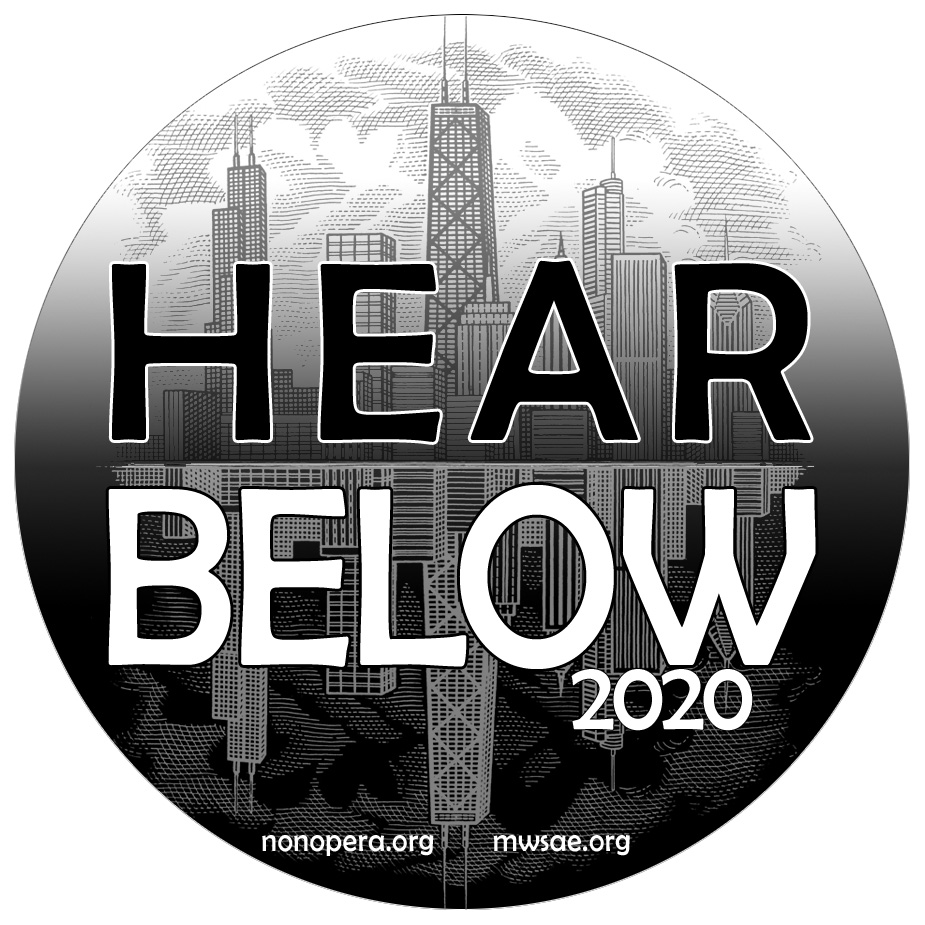 A personal account of HEAR BELOW: Listening to Chicago Underground, a Pedway soundwalk led by Christophe Preissing of NON:op Open Opera Works and Eric Leonardson of the Midwest Society of Acoustic Ecology with Alex Braidwood of Listening Instruments.
A personal account of HEAR BELOW: Listening to Chicago Underground, a Pedway soundwalk led by Christophe Preissing of NON:op Open Opera Works and Eric Leonardson of the Midwest Society of Acoustic Ecology with Alex Braidwood of Listening Instruments.
February 14, 2020
By Sharon Hoyer
• • •
Hearing is constant. We can’t shut our ears as we can our eyes; sleeping or awake, attentive or distracted, our ears never stop receiving and transmitting sound waves to our brains. Studies have shown that the body does not adapt to noise. No wonder so many of us drift through our commutes swaddled in cushioned headphones or with earbuds jammed into our ear canals, sonically cocooned against the cacophonous city.
On February 14, NON:op Open Opera Works and the Midwest Society for Acoustic Ecology invited folks to give a close listen to the everyday sounds we tune out in “Hear Below: Listening to Chicago Underground,” a lunch-hour sound tour of an easternmost section of the Chicago Pedway System—the series of underground walkways that connect buildings, parks, train stations and parking garages east-west from Maggie Daley Park to the Thompson Center and north-south from Wacker Drive to the Art Institute. Architecture tours of the Pedway, led by the Chicago Architecture Center, take place regularly, but NON:op’s tour invited attendees to experience the “city under the city” with the sense we commonly block, drown out, or simply ignore while rushing through its corridors from the CTA stops in Block 37 to the Aon Center, or from Millennium Station to City Hall.
On that sunny and frigid Friday afternoon, about forty people gathered in the entryway to the School of the Art Institute of Chicago for the tour. Preissing of NON:op and Leonardson of MSAE welcomed everyone and handed out buttons to identify the group … and to help explain why a mob of people were making a silent underground pilgrimage from the parking garage under Millennium Park to the Chicago River.
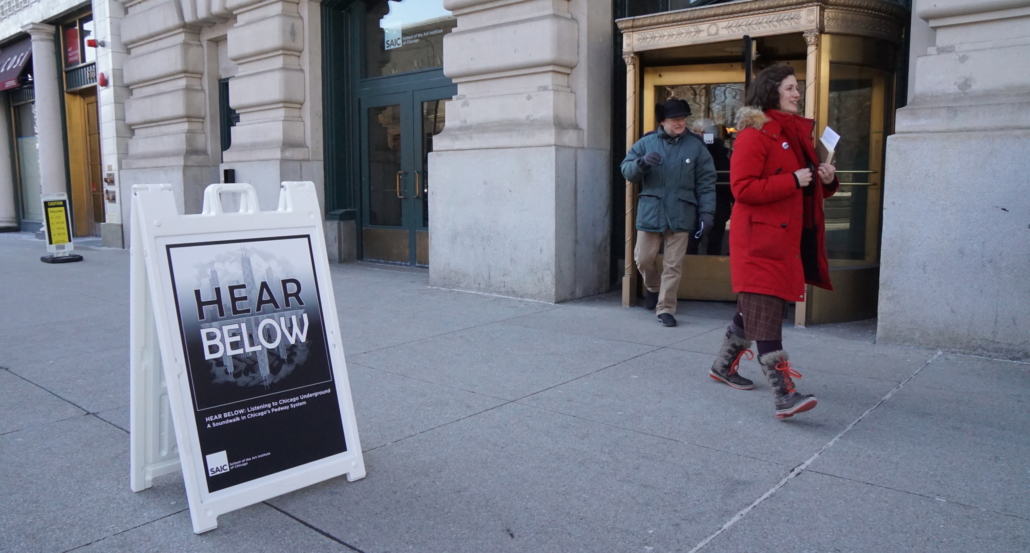
We headed east, across Michigan Avenue, and left the sunny day behind us, descending the stairs to the Millennium Station parking garage. Here, a few dozen feet below the roar of six-lane traffic, Leonardson lead the group in an “ear cleaning,” asking us to close our eyes and tune in, first to the farthest sounds we could detect, then those as close as possible. It was like an aural stretch, testing and gently expanding our personal sonar range. Sound artist Alex Braidwood handed out seven sets of Listening Instruments, headphones, gutted of their electronic components and fitted with copper tubing of various lengths bent straight upward in such a way that made the wearer look a bit like an antelope. These instruments amplified certain frequencies according to the length of the tubing. The effect was surreal: sounds normally at the forefront—voices in particular—fell away and the ambient hum of higher or lower tones flooded the ears. Preissing explained that there would be stops along the tour, good times to pass the listening instruments around so everyone would have a chance to take a listen.
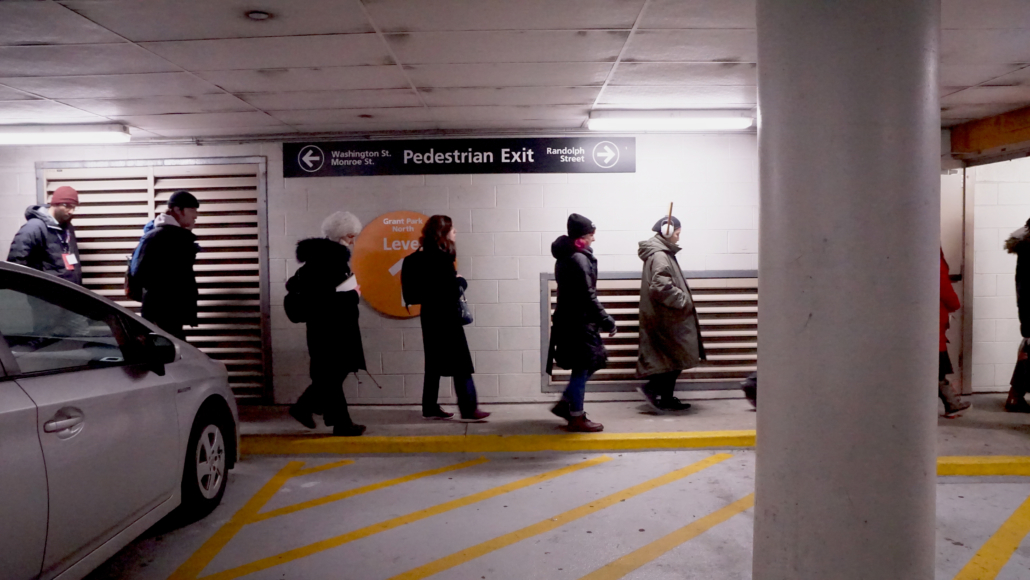
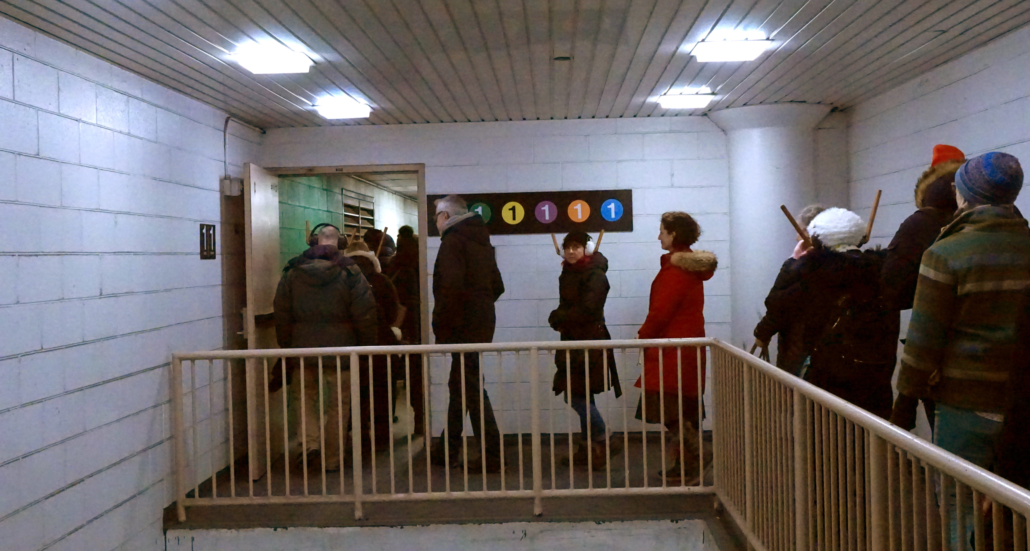
We headed north, single file most of the time, navigating the perimeter of underground parking lots and filing through stairwells, silently absorbing the echoes and low rumbles of the concrete sub-terrain. Our first stop was a fork in the path under Washington Street. We paused to share sounds we noticed and to pass the listening instruments. We continued north to Randolph, passing an active construction site that announced itself from a football field-length away. The noise ricocheted off every surface, initially sounding like a growling beast, some massive piece of motorized equipment. As we approached the source and the distortion gradually lessened, the racket transformed into the deafening, rapid-fire crack of a lone jackhammer. Not far from the construction worker we passed a person reclining on the ground, somehow managing to sleep amidst head-splitting noise that caused many of us to shove index fingers in our ears.
Our next stop was the Millennium Station and South Shore Metra tracks, where we took note of an automated female voice repeating “track number three” presumably without stopping, until the last train has departed for the day. We walked the length of the platform, the voice at the Millennium Station end growing faint, then overlapping with the same voice repeating the same phrase, at the same tempo but out of sync, growing louder and eventually replacing the first voice as we approached the South Water Metra Station on the north end of the platform. The disconcerting counterpoint of pre-recorded human voices made me wonder how animals in underground burrows experience human-made sounds. I imagine they find the clamor significantly more unnerving.
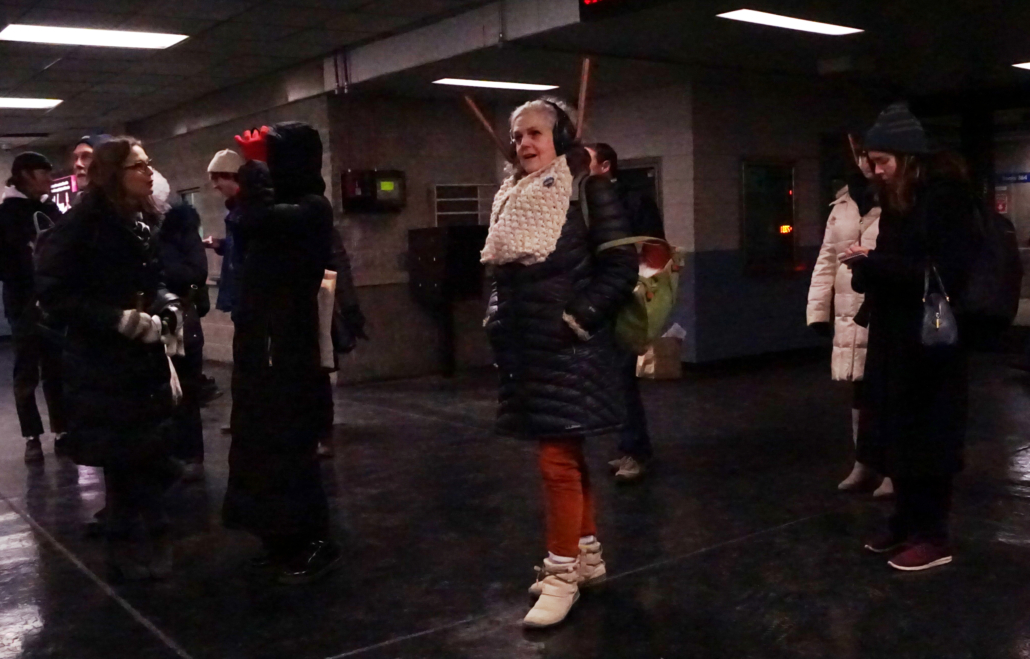
The final leg of the tour took us from the South Water Metra Station up through the levels of Two Illinois Center, which was the aural equivalent of ascending too quickly from a scuba dive. As we rose from the subterranean, infrastructural level to the bustling food court, the sonic landscape abruptly shifted from low and rumbling to bright and raucous: hundreds of people fast-walking the halls, talking on phones or eating in the gauntlet of restaurants on the mezzanine that assaulted our noses even more than our ears. The half hour of attending closely to one sense seemed to increase the sensitivity of the others as well. I realized that my habit of shutting out the sounds around me on my commute with music or podcasts was a form of self-impairment, like walking through the world with my dominant hand tied behind my back. Navigating the bustling mezzanine I felt hyper-alert, like thin veil draped over the world that dulled and muffled everything around me had been lifted. The effect was stimulating. Almost overwhelmingly so.
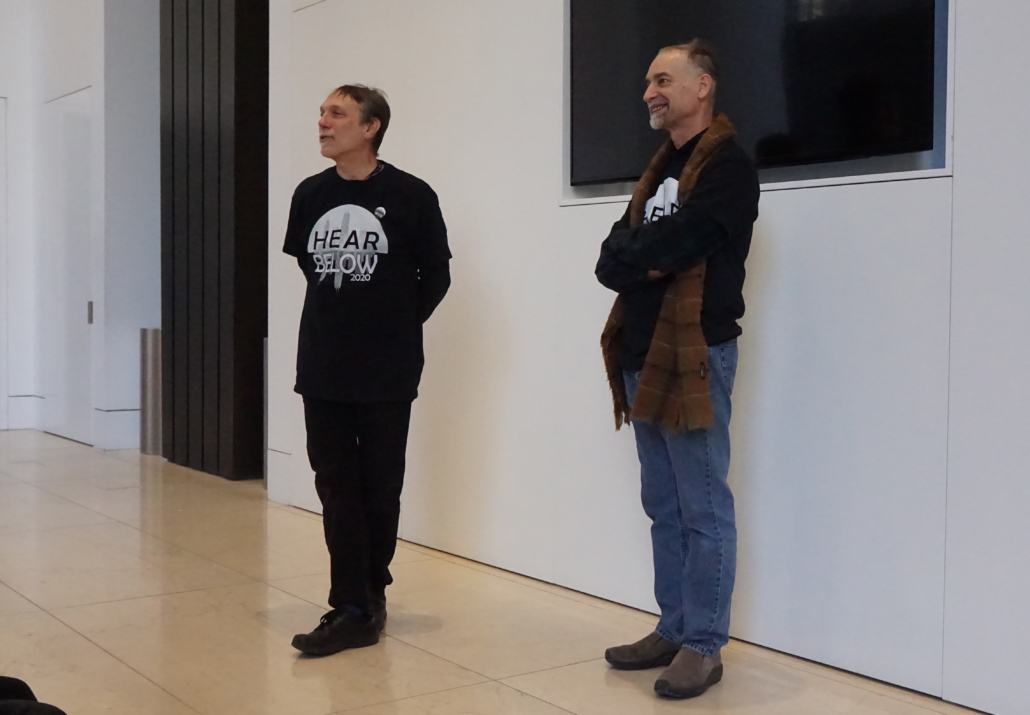
The tour concluded back at street level, in the Chicago Architecture Center’s sunlit lecture hall overlooking the Chicago River. We spent about twenty minutes discussing the experience of the tour. Somewhat ironically, the space swallowed sound, making it a bit difficult to hear Preissing and Leonardson at the front of the room. Attendees made thoughtful observations about the sonic difference between the lower, operational levels of the city and the higher levels of habitation and city life. One attendee commented on the person sleeping near the construction zone and how the repellent nature of the noise provided them a space to sleep undisturbed; she commented on the luxury of silence, and how the sonic environment is, in a city, determined by class.
When the event concluded, I stepped outside feeling a sense of inner calm that comes with being attuned to what Leonardson referred to as the ecology of sound. Instead of popping in noise-cancelling ear buds, I quieted my internal dialogue and, walking to the train, listened.

